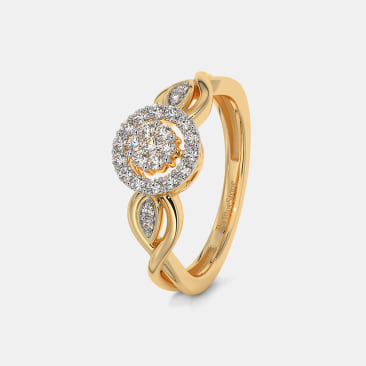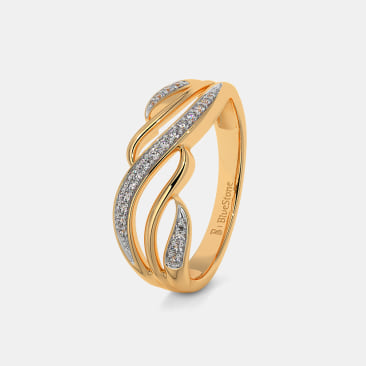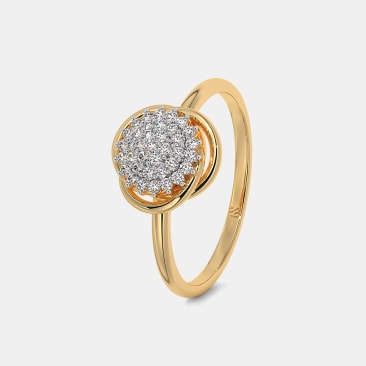Diamond Color
Diamonds are known to usher in the colours of joy and happiness in people’s lives. And yet, the most desirable colour of this precious stone is actually no-colour! Yes, you heard us right. For something as brilliant and beautiful as diamonds, this may seem like a surprising aspect, but it is this very aspect that adds to the sparkle and shine of diamonds. Let’s take a look at the gorgeous world of the most spectacular stone on earth and why its colourless form is such a rage among the people. In this article, we tell you everything you should know about the colour of diamonds – what it is, how it impacts the value of the stone, different colour grades, and buying tips, among others.
Colour or No-Colour: What Does the Term Diamond Colour Mean?
For most people, the word ‘colour’ evokes images of bright hues. Well, that’s not the case with diamonds. In the diamond and solitaire lingo, the term colour actually refers to the lack of it unless we are talking about fancy colour diamonds. If you are to examine a structurally perfect and chemically pure diamond, you will find that it has no colours at all, much like a drop of clear water. In fact, gem-sized perfect natural diamonds are almost a rarity because such a diamond comprises of 100% pure carbon that contain no impurities at all. In the real world, however, finding such a piece of absolute beauty will be a rare phenomenon.
Almost all diamonds include some degree of colour impurity in their composition. Such impurities and/or structural flaws in the crystal lattice of the stone impacts its colour. Based on the intensity and hue of the diamond’s colour, the stone’s value can increase or decrease dramatically. For instance, a diamond with a tint of yellow in it often considered to be less valuable than a white diamond. Fancy coloured diamonds are a different story altogether. Diamonds with intense blue or pink colours can be considered to be highly valuable. The legendary Hope Diamond is an example of the precious stone having an intense blue colour. Red stones are among the rarest diamonds found on earth. It should be noted here that often the colour distinctions in the stone are so subtle that you can’t see them easily. But it is these distinctions that make a difference to the price and quality of your diamond.
How Does a Diamond’s Colour Impact Its Value?
Colour is one of the 4Cs that impact a diamond’s appearance as well as value. When light hits a diamond’s facets, some of the rays get scattered into a rainbow of colours. They then reflect off the stone’s interior facets and bounce back to our eyes in flashes of colour. This is known as the fire of a diamond. If a diamond crystal has observable colour in it, its ability to reflect light decreases in comparison to a colourless diamond. So, fire and sparkle both suffer. As such, the value of the diamond also decreases. That is why people prefer colourless diamonds.
So, next time when you go shopping for diamond rings or diamond bracelets, remember that the most valuable diamonds have the least colours in them.
Diamond Colour Grades: A Quick Guide
Colourless diamonds may be the most popular ones, but diamonds exist in nature in almost every shade present in the rainbow and such fancy coloured diamonds are valued and graded differently. Thus, there are two grading system for diamonds – one for the normal range and one for the fancy colour range.
The normal colour grading of diamonds refers to the lack of colours. The less the colour, the higher the colour grade will be. One exception to this rule is the fancy coloured diamonds. Such diamonds are available in various colours like pink, green, blue, and yellow and the colour grading improves as the colour becomes strong in the stones. In case of the white diamonds, the colour grade is measured on a scale ranging from D to Z.
Colourless Diamonds (D, E, F): D is the highest colour grade for a diamond. Stones belonging to this colour grade are almost colourless and icy white. E and F colour graded diamonds have very slight traces of colour in them that remain undetected unless examined by a gemologist. This group of diamonds is rarest and the most expensive one. Such diamonds are best mounted on white gold or platinum. Yellow gold or other coloured settings are generally avoided as they may take away from the luminous beauty of this category of diamonds.
Nearly Colourless (G, H, I, J): This colour grade displays nearly no colour. The diamonds in this category appear colourless to the naked eye. If you are looking for a diamond to mount in platinum or white gold, go for G or H colour graded stones. For yellow gold mounts, you can opt for I or J graded diamonds. The diamonds of this group are less expensive than the D-F group and are often used as the central stones in rings.
Faint Colour (K, L, M): Diamonds in this colour grade possess a slight tint of yellow that can be seen even with the naked eye. Due to this, diamonds of this group are not as desirable as the two previous groups. They are also not as rare or as expensive as the other two groups mentioned above. Diamonds belonging to this group can be set in yellow gold mounts for an appealing look.
Very Light Colour (N, O, P, Q, R): This group of diamonds has visible colour. Often the colour is a tint of yellow or brown. There is very little demand for such diamonds and they are available at a much low price range. Most reputed jewellers avoid dealing in this category of diamonds for making ornaments.
Light Colour (S-Z): The diamonds belonging to this colour grade exhibit easily noticeable yellow or brown tint. As they are placed at the low end of the colour grade, they are among the least expensive diamonds. Such diamonds are usually not considered for making ornaments.
The Colour Factor: Buying Tips for Diamond Lovers
Colour is an important factor to consider when buying a diamond. Here are a few tips that can help you to make a good choice when buying this precious stone.
If you are looking for diamonds with a lot of fire and sparkle, go for the stones belonging to D-F group.
Also, make sure that the stone you select is well-cut. Most people tend to think that all colourless diamonds exhibit brilliance. But it is the cut that finally determines the brilliance of a diamond. So, a combination of both, cut and high colour grade is needed.
To ensure that you pay the right price for the diamond, always look for certifications. A certification from a reputed lab ensures that the diamond has been tested and analysed. You will also have a documentation that will state the features of your diamond explicitly. So, why take any risk?
Select your setting to enhance the beauty of your diamond. For instance, a high colour graded diamond will look good when set in platinum or white gold. For diamonds with low colour grades, yellow gold mounts will be a better match. Your goal should be to make sure that the diamond is the focal point of attraction in the jewellery and not the setting.
Now that you know almost everything about the colour of diamonds, you can make an informed decision when buying jewellery. Also, you can understand what your jewellers mean when they drop words like Grade N or Grade and the description of the certificate. That’s indeed great, isn’t that?




